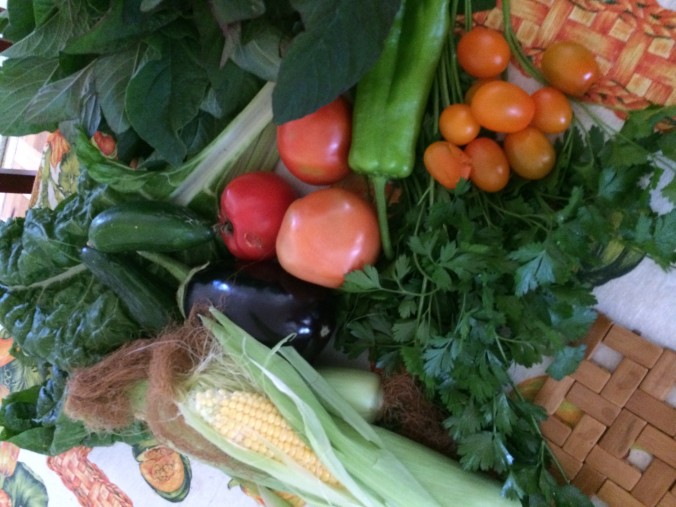VCE Food Studies is designed to build the capacities of students to make informed food choices. Students develop their understanding of food while acquiring skills that enable them to take greater ownership of their food decisions and eating patterns. This study complements and supports further training and employment opportunities in the fields of home economics, food technology, food manufacturing and hospitality. (Rationale p.5 of the VCE Food Studies Study Design)
The new VCE Food Studies course due to be implemented into Victorian secondary schools in 2017 is contemporary, rigorous and responsive to addressing local and global food issues. The course content has moved away from an individualistic approach that earlier focused on sensory and physiological influences, making food that looked and tasted good, towards one that more broadly accommodates the food needs of local and global communities. The reinvigorated content reflects the notion that food choice and behaviour are determined not only by physiological factors to satisfy hunger and nourish the body, but also by a range of interlocking factors including psychological, environmental, sociological factors and economic factors (Hjelmar U 2011; Nestle M et al. 2009; Salmon J, Campbell KJ & Crawford DA 2006; Steenhuis IHM, Waterlander WE & De Mul A 2011; Vartanian LR, Herman CP & Wansink B 2008). In response, the course designers have attempted to encompass a more holistic approach to food education which integrates theories and practices to empower young people with the skills that lead them to life-long healthy eating. The emergence of the term ‘food literacy’ in recent years is an attempt to acknowledge this. In addressing food literacy, the new course includes more than the ‘hands-on’ food preparation skills to prepare young people for life. For example, the key knowledge now encompasses themes such as environmental sustainability (for example, minimizing food waste) and the key skills now require students to develop critical thinking skills to help them manage as successful consumers in the market place. Teachers are challenged to incorporate these ideas in the classroom when they develop their food education programs both at the junior and senior levels as a scaffold towards and beyond their students’ schooling (Pendergast D & Dewhurst Y 2012a; Smith MG 2009). The European Food Framework is one such example http://www.europeanfoodframework.eu/ Further, the new VCE course attempts to make the course relevant to those who opt for careers in the food industry as researchers, marketers, technologists and economists.
Hjelmar U 2011, ‘Consumers’ purchase of organic food products. A matter of convenience and reflexive practices’, Appetite, vol. 56, no. 2, pp. 336-44.
Nestle M, Wing R, Birch L, Disogra L, Drewnowski A, Middleton S, Sigman-Grant M & Sobal J 2009, ‘Behavioral and Social Influences on Food Choice’, Nutrition Reviews, vol. 56, no. 5, pp. 50-64.
Pendergast D & Dewhurst Y 2012a, ‘Home Economics and food literacy: An international investigation’, International Journal of Home Economics, vol. 5, pp. 245-63.
Salmon J, Campbell KJ & Crawford DA 2006, ‘Television viewing habits associated with obesity risk factors: a survey of Melbourne schoolchildren’, Medical Journal of Australia, vol. 184, no. 2, p.64.
Smith MG 2009, ‘Food or nutrition literacy? What concept should guide home economics education?’, International Journal of Home Economics, vol. 2, no. 1.
Steenhuis IHM, Waterlander WE & De Mul A 2011, ‘Consumer food choices: The role of price and pricing strategies’, Public Health Nutrition, vol. 14, no. 12, pp. 2220-6.
Vartanian LR, Herman CP & Wansink B 2008, ‘Are we aware of the external factors that influence our food intake, Health Psychology, vol. 27, no, 5, pp 533-8
The following table summarises the main features of the former and new Study Design
| THEN
|
NOW (2017) |
| Food Choice determined by
‘Stuffing your face’ (physiological factors to satisfy hunger and nourish the body and sensory factors)
|
Food Choice determined too by psychological, environmental, sociological factors and economic factors
|
| ‘Making food look and taste pretty’ (‘Hands-on’ food preparation and presentation skills)
|
A holistic approach to food education encompassing higher-ordered and critical thinking skills
|
| ‘Fancy and fad food’ mimicking gimmicks and trends in TV food competition programs and fad diet trends
|
‘Food with a conscience’ move towards socially and ethically-minded food approach with an emphasis on environmental sustainability
|
| ‘Hobby food’ – limited to the home and domestic settings (‘Hestian’1. or private approach to food)
Limits career pathways
1. Pendergast, D https://www.kon.org/patriarchy_monograph.pdf
|
‘Humanity food’ – sharing ‘food for all’ to support the dietary needs of 7B+ people and the environmental sustainability of the planet (‘Hermian’ 1. or public approach to food)
Opens up career pathways
|

Leave a Reply to Anonymous Cancel reply